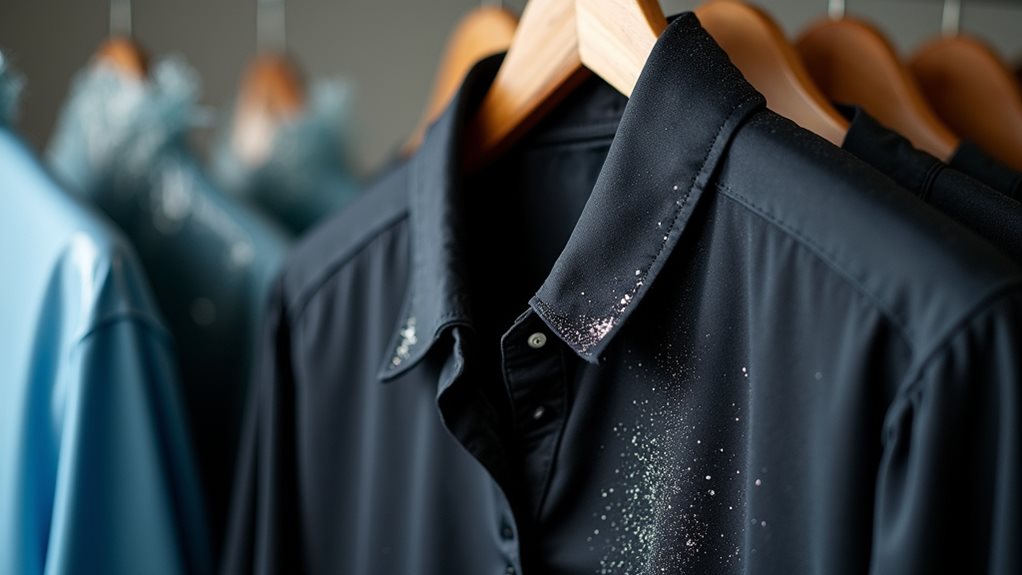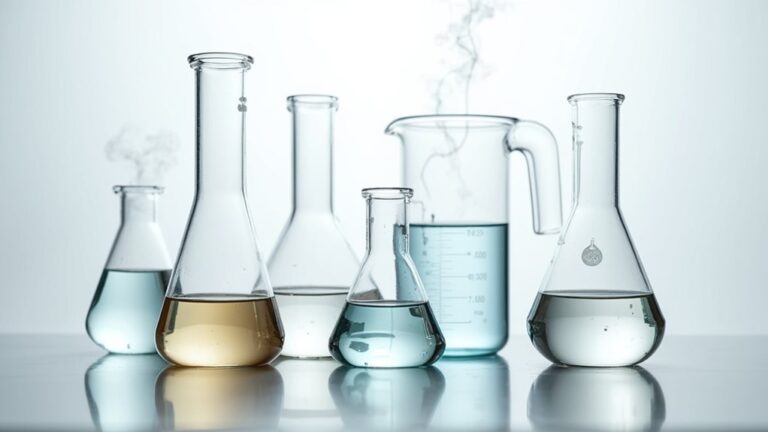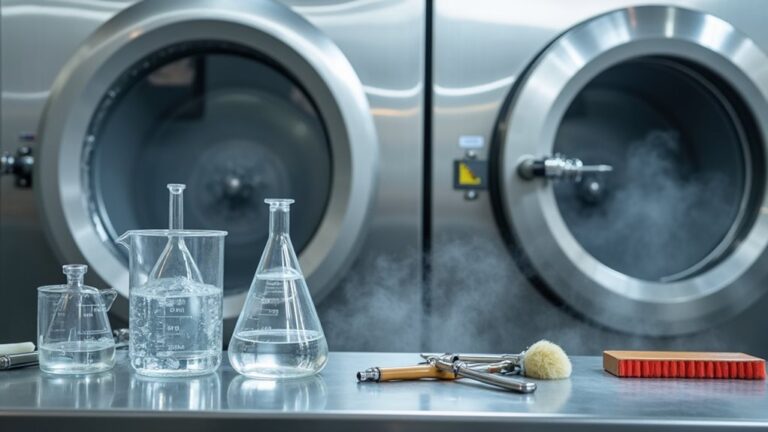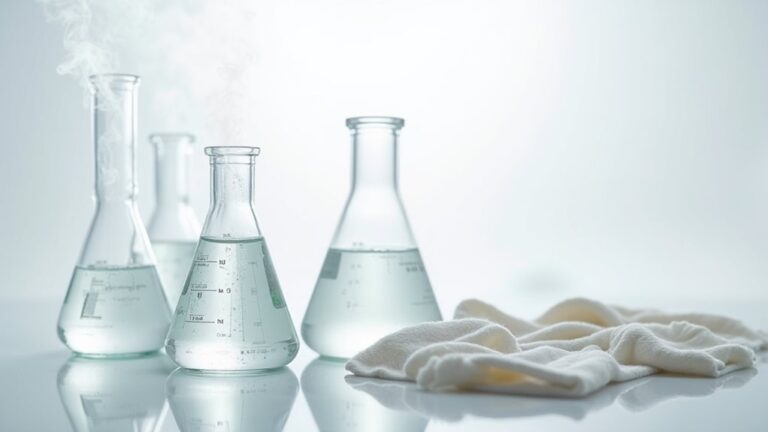Yes, dry cleaning can definitely cause skin rashes, and you’re not alone if you’ve experienced mysterious red patches after wearing freshly cleaned garments. The culprit is usually perchloroethylene (PERC), a harsh chemical solvent that lingers on fabrics and can trigger contact dermatitis, especially if you have sensitive skin or conditions like eczema. The irritation typically shows up as redness, itching, or even burning sensations where clothing touches your skin, and honestly, it’s more common than most people realize. Continue exploring to discover safer alternatives and effective treatment strategies.
Understanding the Link Between Dry Cleaning Chemicals and Skin Reactions
When I first started noticing mysterious red patches appearing on my neck after wearing my favorite blazer, I honestly thought I was developing some strange midlife allergy to wool.
Those mysterious red patches on my neck had me convinced I’d suddenly developed a wool allergy in my forties.
But it turns out the culprit was lurking in something far more mundane – the dry cleaning chemicals clinging to my clothes.
You see, perchloroethylene and other harsh chemicals used in traditional dry cleaning don’t just vanish into thin air after the process.
These chemical residues stick around on your garments, creating a perfect storm for skin irritation and allergic reactions.
Contact dermatitis becomes your unwelcome companion when these substances transfer from fabric to skin, especially if you’re already sensitive to environmental triggers or have delicate skin that reacts to everything 😅
The EPA has classified PERC as a probable human carcinogen, making skin contact with contaminated clothing an even more serious concern than just temporary irritation.
Common Chemical Culprits That Trigger Dermatitis

The real villains in this skin irritation story aren’t just mysterious “chemicals” – they’re specific compounds with names that sound like they belong in a chemistry textbook, and trust me, knowing their identities can help you protect your skin from their sneaky attacks.
Perchloroethylene, the heavyweight champion of dry cleaning solvents, leads the pack as a notorious irritant that’ll leave your skin angrier than a cat in a rainstorm 🌧️.
This chemical culprit doesn’t work alone though – detergents and precleaning agents join forces to trigger allergic reactions and dermatitis in unsuspecting folks.
If you’ve got sensitive skin or eczema, these compounds become even more aggressive, creating irritant contact that manifests as those dreaded skin rashes we’re trying to avoid.
These troublesome chemicals can persist as chemical residues on your freshly cleaned garments, continuing to cause problems long after you’ve picked up your clothes from the cleaner.
Identifying Symptoms of Dry Cleaning-Related Skin Irritation
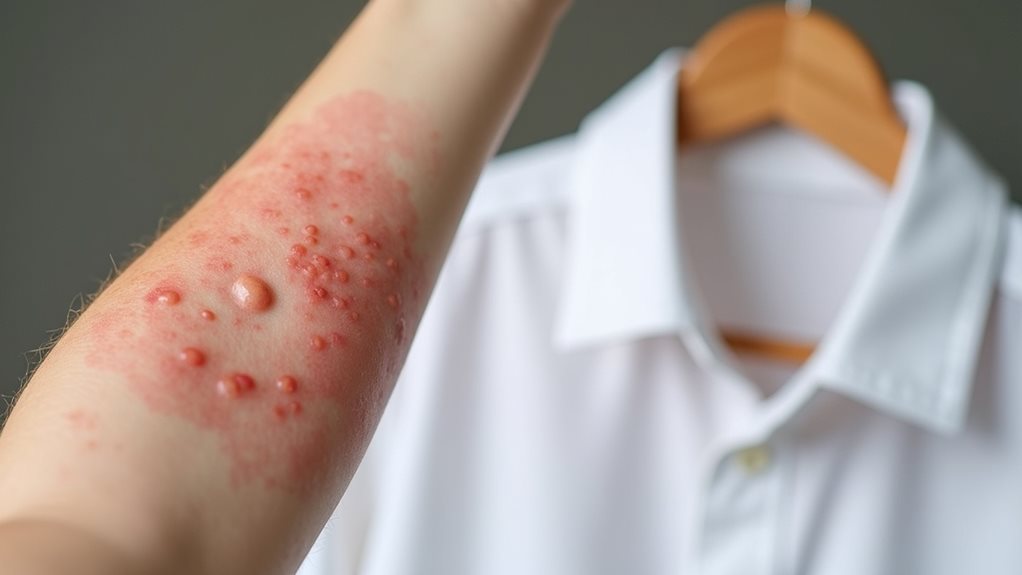
Although your body mightn’t send you a formal invitation to this unwelcome skin party, recognizing the telltale signs of dry cleaning-related irritation becomes your first line of defense against ongoing discomfort and potential long-term skin damage.
You’ll notice redness appearing where freshly cleaned garments touch your skin, often accompanied by that maddening itch that makes you want to scratch like a lottery ticket 🎟️.
Sensitive skin folks might experience immediate burning sensations, while others develop delayed reactions characteristic of allergic contact dermatitis.
Your skin doesn’t follow a schedule – reactions can strike immediately or sneak up days later depending on your sensitivity level.
Irritant contact dermatitis from harsh chemicals creates dry, flaky patches that feel uncomfortably tight.
Watch for raised bumps on areas where treated clothing contacts the skin, as this can indicate your body’s reaction to perchloroethylene residues or other solvents that weren’t fully removed during the cleaning process.
If you’re experiencing these symptoms after wearing dry cleaning, consider requesting hypoallergenic solvents or discussing eco-friendly alternatives with your cleaner to prevent future skin rashes.
Who’s Most at Risk for Developing Skin Rashes From Dry Cleaning
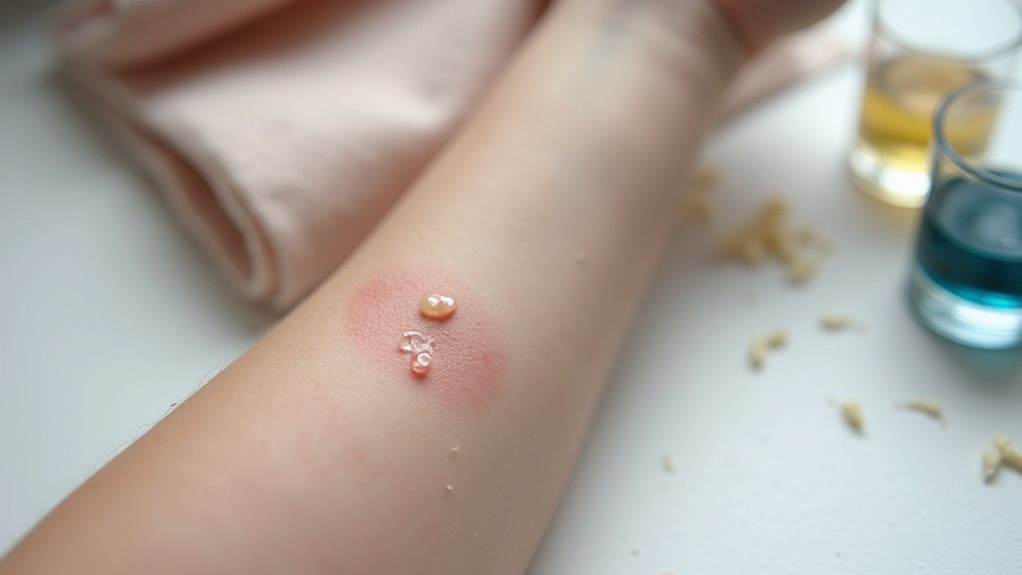
While anyone can develop a rash from dry cleaning chemicals, certain people find themselves playing an unwelcome game of skin roulette every time they slip into freshly cleaned clothes 🎰.
If you’ve got pre-existing skin conditions like eczema or psoriasis, you’re already dealing with compromised skin barriers that make you extra vulnerable to irritant contact dermatitis from cleaning solvents.
Those with sensitive skin, especially children, often react more dramatically to chemical residues lingering on garments.
People allergic to perchloroethylene face particular challenges, since this common solvent can trigger immediate reactions.
Frequent dry cleaning users who don’t properly air their clothes accumulate more chemical exposure, creating a perfect storm for skin rashes to develop over time.
While workers in dry cleaning facilities face the highest exposure levels to these chemicals, even consumers can experience skin irritation from traditional solvents used in the process.
Prevention Strategies to Minimize Skin Exposure
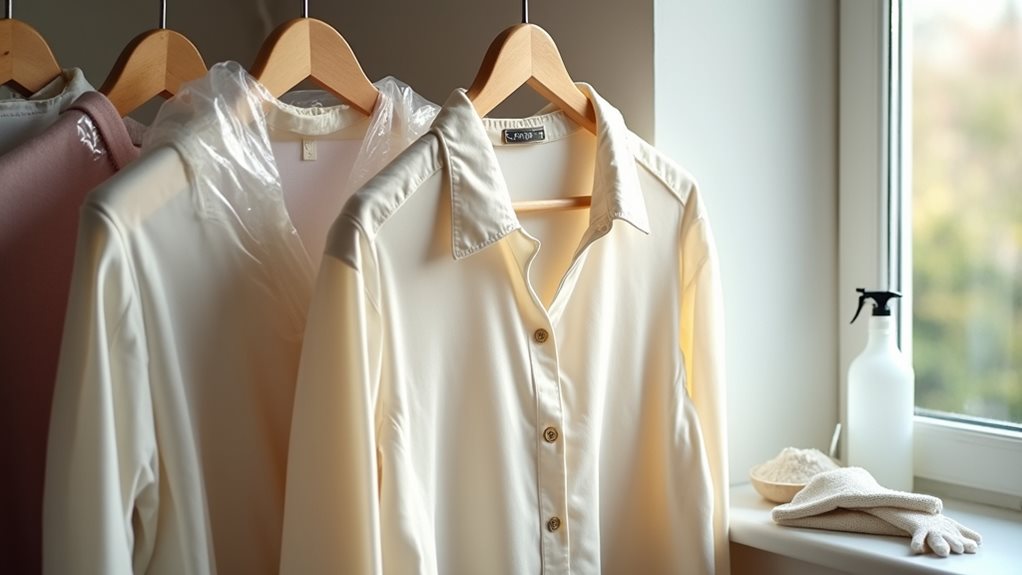
Fortunately, you don’t have to resign yourself to a lifetime of post-dry cleaning skin irritation, because there are several smart strategies that can dramatically reduce your exposure to those pesky chemical residues.
Don’t let chemical residues win the battle against your skin—smart strategies can dramatically reduce your exposure to post-cleaning irritation.
First, seek out eco-friendly dry cleaning services that skip the harsh stuff like perchloroethylene, opting instead for gentler, hypoallergenic solvents that won’t make your skin can react like it’s staging a rebellion.
Always hang freshly cleaned garments in a well-ventilated area for at least thirty minutes before wearing them—think of it as letting them “breathe out” any lingering common chemical nastiness.
To protect your skin further, use breathable garment bags during transport, maintain dust-free storage areas, and wash your hands after handling treated clothes.
Consider alternative cleaning methods like wet cleaning or liquid CO2 cleaning, which many modern dry cleaners now offer as safer options that significantly reduce the risk of chemical residue on your garments.
Smart skin care starts with smart choices!
Eco-Friendly Dry Cleaning Alternatives for Sensitive Skin
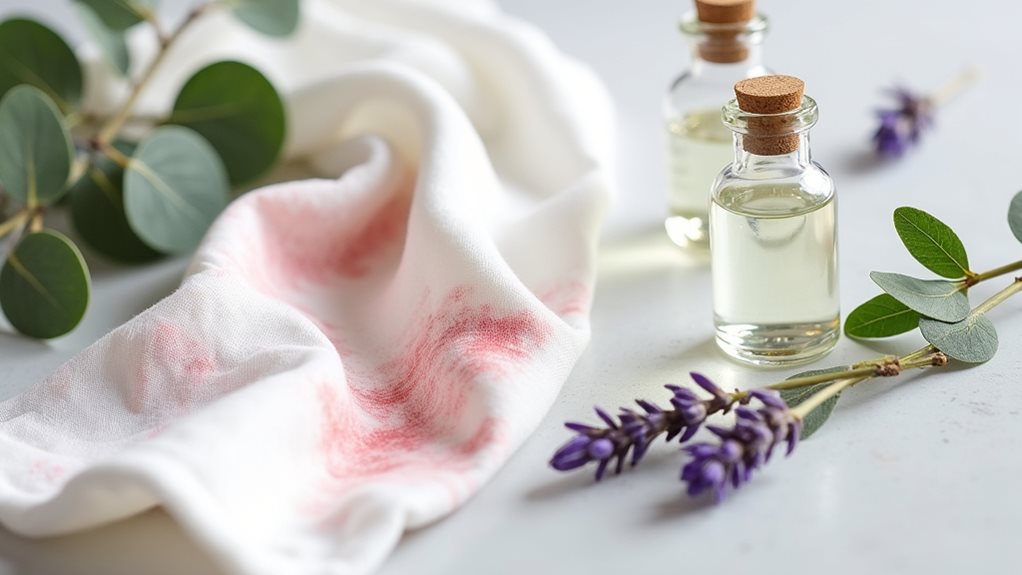
When your skin treats traditional dry cleaning chemicals like unwelcome party crashers, it’s time to explore the gentler world of eco-friendly alternatives that won’t leave you looking like you’ve been wrestling with poison ivy.
Eco-friendly dry cleaning methods using liquid carbon dioxide or silicone-based cleaners dramatically reduce skin sensitivities, while hypoallergenic cleaning solutions work like gentle guardians for your delicate skin.
Steam cleaning offers a chemical-free method that refreshes fabrics without harsh irritants and allergens lurking in every fiber.
You can even try home dry cleaning kits with non-toxic agents for a DIY approach that’s kinder to sensitive skin.
When choosing professional services, ask about their green practices – your skin will thank you later! 🌿
Modern dry cleaners are increasingly adopting hydrocarbon solvents and other safer alternatives to replace traditional perchloroethylene, offering effective cleaning while minimizing potential skin reactions.
Treatment Options for Dry Cleaning-Induced Skin Rashes
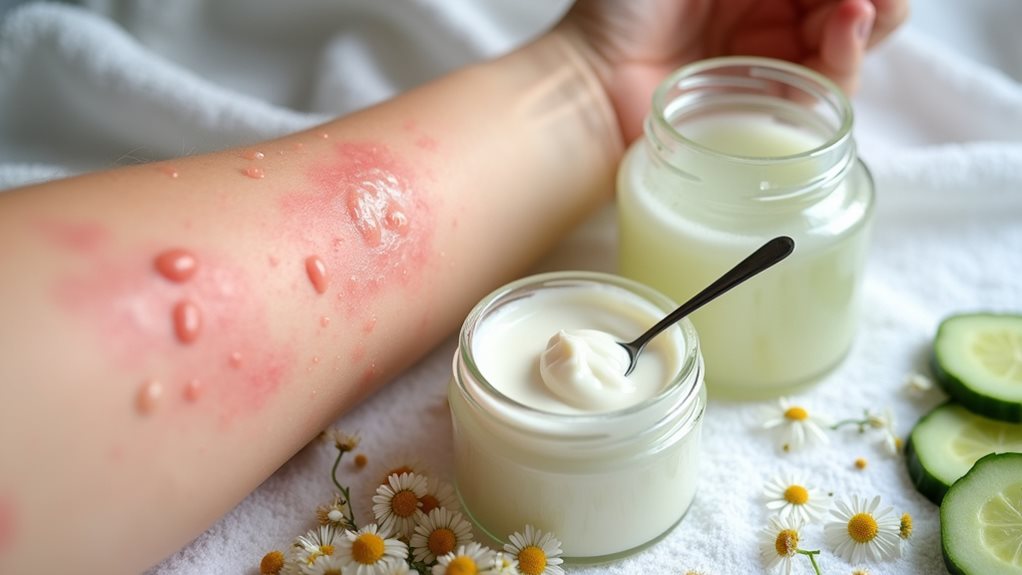
Sometimes prevention isn’t enough, and despite your best efforts to find gentler cleaning methods, you might still find yourself dealing with an angry, red rash that’s making you look like you’ve had an unfortunate encounter with a cranky lobster.
When this happens, your first move should be avoiding whatever triggered your allergic reaction – no more hugging those freshly cleaned clothes!
Start treatment with over-the-counter antihistamines to calm the itching, then gently apply topical corticosteroids to reduce inflammation.
Moisturizing with fragrance-free lotions helps your skin heal without adding more chemicals that could irritate things further.
If your skin rash persists or worsens, don’t hesitate to visit a dermatologist who can prescribe stronger treatments customized specifically for your situation.
For future cleaning needs, consider switching to eco-friendly cleaning methods like wet cleaning or CO2 cleaning that use biodegradable solvents instead of harsh chemical alternatives.

